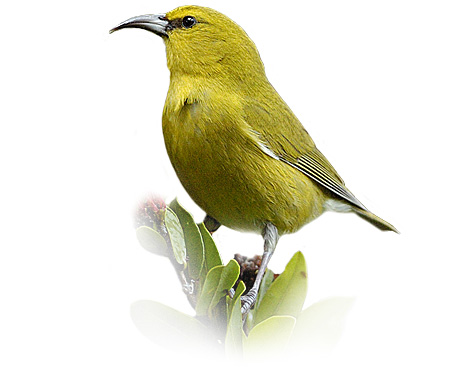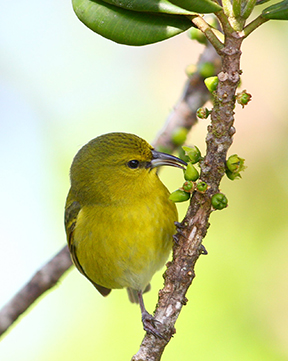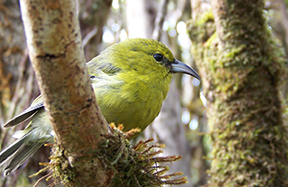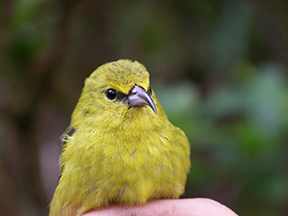
Kaua’i ‘amakihi
Chlorodrepanis stejnegeri
The Kaua’i ‘amakihi is a small, olive green honeycreeper with black lores (the areas between the bill and the eyes) and a short, downward curving bill. Males and females appear similar, although females are duller and have slightly smaller bills.
Kaua’i ‘amakihi are generalists, feeding on insects, nectar, and fruit. They can be seen foraging along branches and trunks for insects, where they utilize their strong claws to help them climb. They nest exclusively in ‘ōhi‘a trees, and are most common in ‘ōhi‘a forests, especially those with a strong koa component.
Formely considered a subspecies, the Kaua’i ‘amakihi has been granted full species status. It is found only on the island of Kaua’i, and is the largest ‘amakihi species, weighing 17g. Historically common across the whole island, it is now found only in high elevation forests in the Alaka’i Wilderness and Kōke’e region. It can be seen or heard on the Pihea Vista and Alaka’i Swamp trails. While Kaua’i ‘amakihi were estimated to have a population of 51,817 in 2000, a 2018 DOFAW survey estimates only 6,987 individuals.





